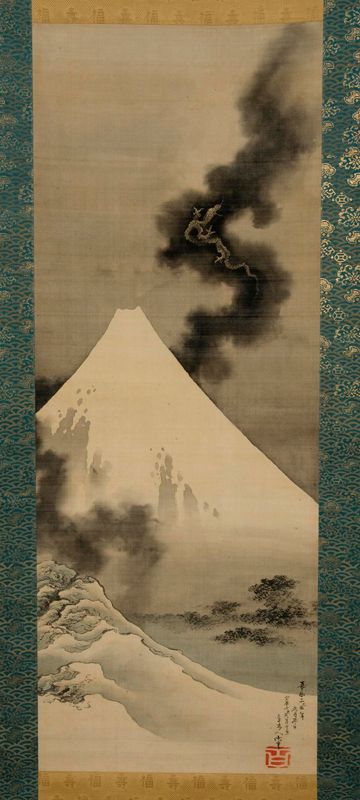I found an interesting comment recently: "It is the complexity of melody which makes music beautiful, just as negative spaces make a painting work. When next at the easel, remember we are making music for the eyes". Mary Kilbreath, a wonderful artist who paints in oils, made this remark. When you look at her paintings, she does indeed use negative space wonderfully.
I have always been fascinated by the power and necessity of negative space. Perhaps my childhood spent with Japanese wood cuts hanging on many of the walls of our home had something to do with my love affair with it. For example, this is a wonderful Hokusai study of The Dragon of Smoke emerging from Mt Fujiyama.
Hokusai. Dragon Flying over Mount Fuji. (Hokusaikan), painting on silk
Negative space in art is the empty space between delineated objects, the area where the eye can rest. It allows a very strong underlying composition to be woven into a drawing or painting, directing the eye around the art in subtle fashion. It allows a rhythm between the positives and negatives, similar to what Mary Kilbreath was saying about music, the pauses and silences highlighting the melody.
The classic demonstrations of negative space usually use pedestalled urns which also read as silhouetted faces, but I found this cat image was an interesting way of showing positive and negative in simple fashion.
Positive and Negative Space, Feline Style
One of the aspects of using negative space that I relate to very readily - again thanks to the Japanese influence - is ensuring that the composition reaches to all four sides of the paper or canvas. Carrying shapes and lines to the edges not only implies more space and continuation of the composition beyond the confines of the paper; it also helps break up the composition into more interesting shapes. Negative space thus becomes easier to incorporate into the composition.
This is an example of my working to all four sides of the paper: Blue Encounter below. Negative space is part and parcel of the work.
Blue Encounter, silverpoint and watercolour, Jeannine Cook artist


